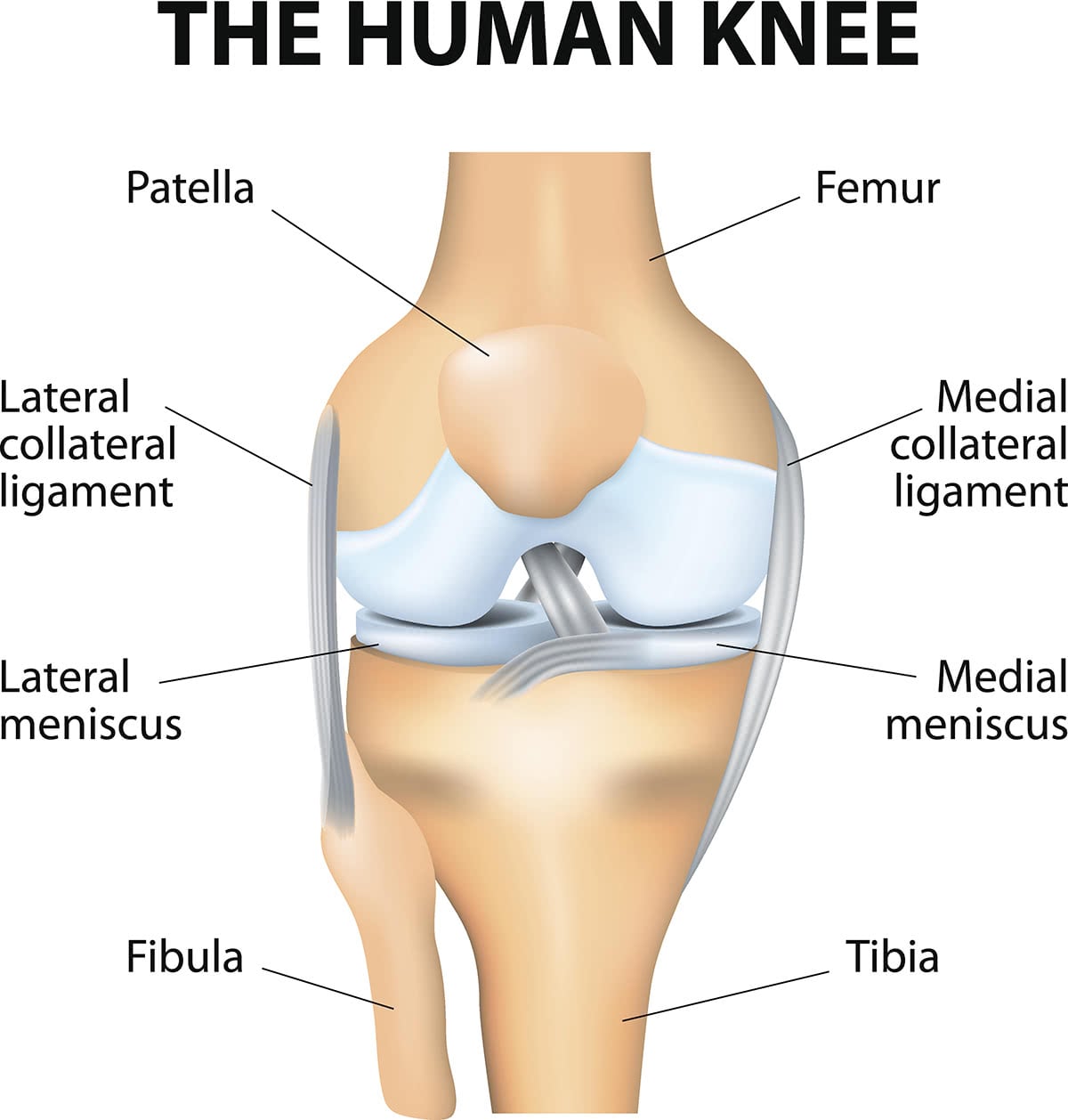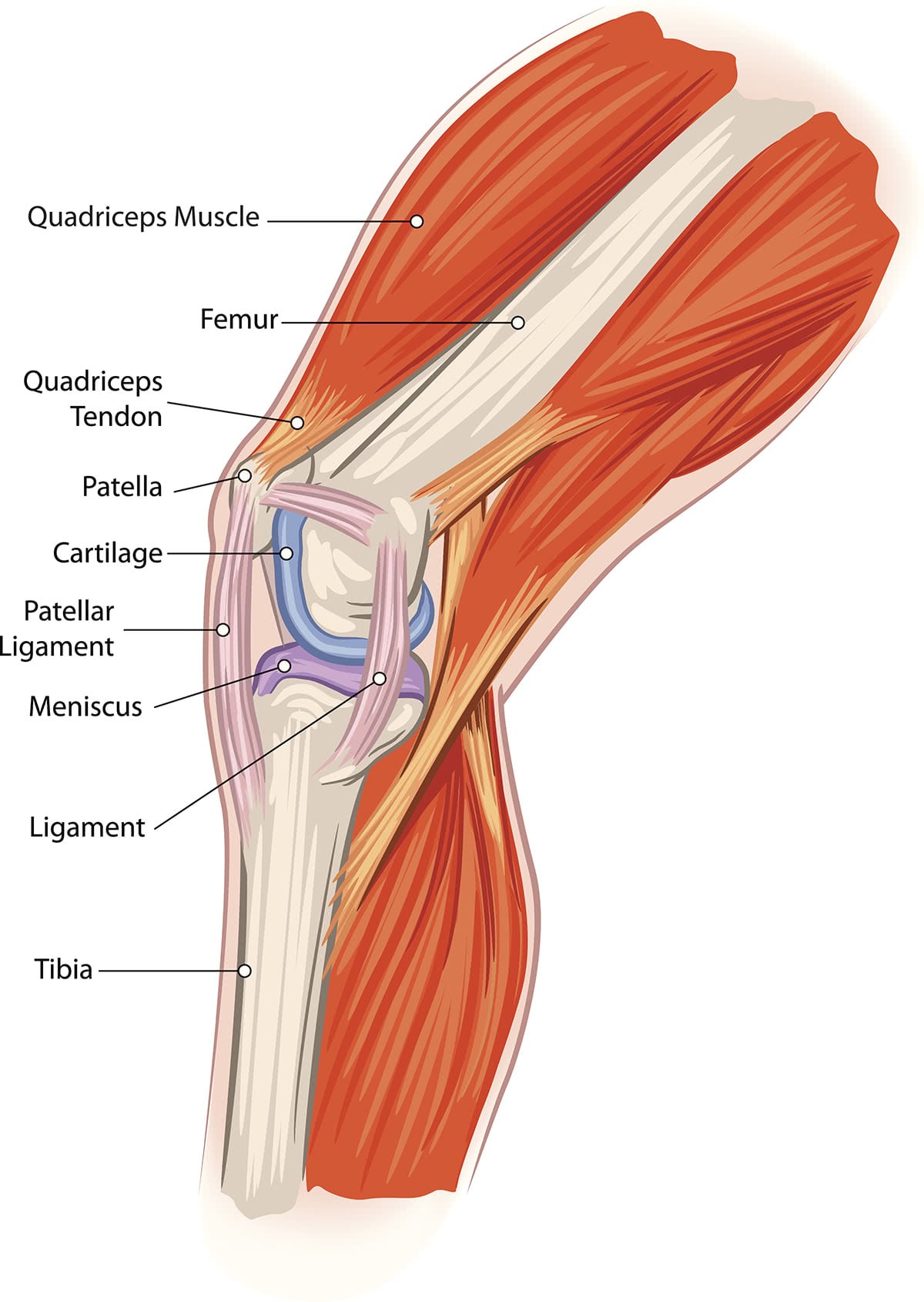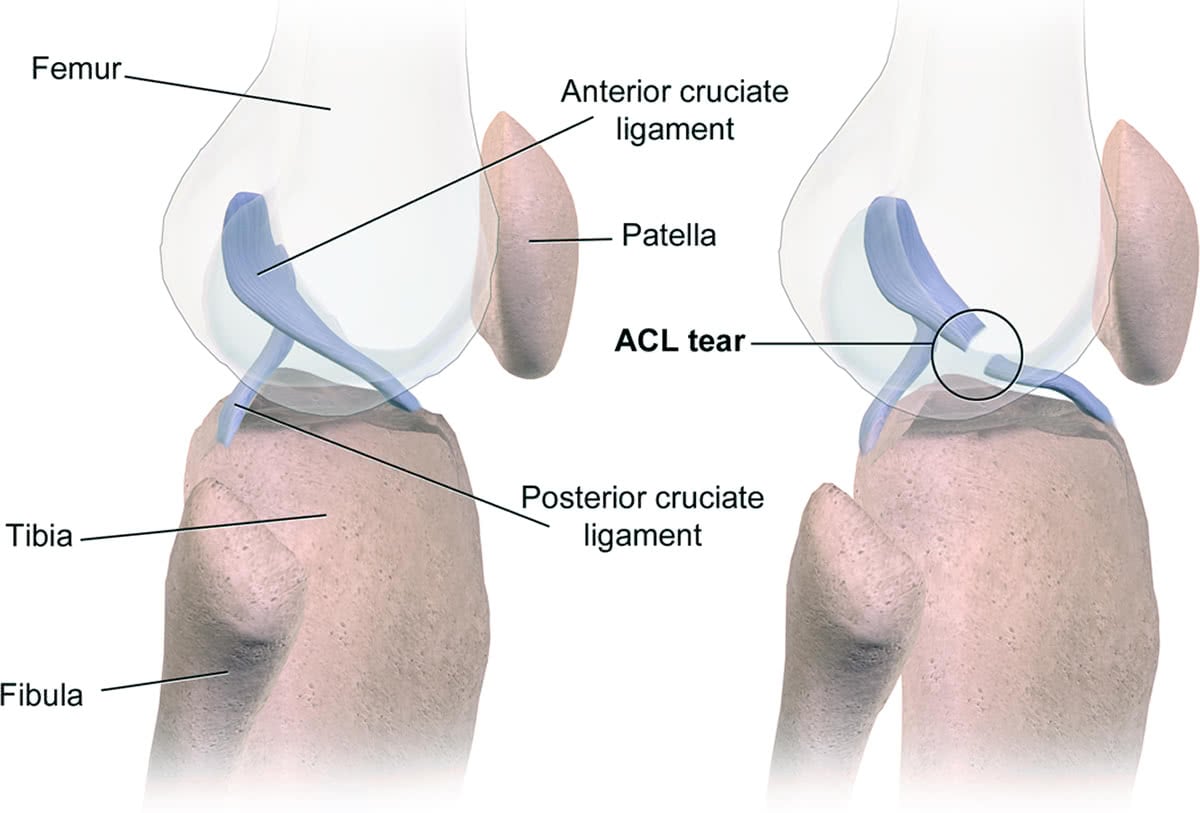Introduction
The Anterior Cruciate Ligament, or 'ACL', helps to stabilise the knee joint by restricting the mobility of the joint. Most injuries to the ACL are caused during sporting activity and the ACL is one of the most commonly injured parts of the knee during sport.
For more information on the makeup of the knee joint, view Anatomy of the Knee.


Causes
Only around 20% of ACL injuries are caused by physical contact with another player or direct traumas to the knee. Around 80% are 'non-contact', that is, caused by a particular movement of the knee. The most common movements causing ACL injury are...
- Coming to sudden stop when moving / running.
- Changing direction suddenly when running.
- Slowing down when running.
- Having a 'bad landing' when jumping.
Of the 20% caused by contact with another player, most of these are caused by either an inadvertent collision or a tackle.
Common competitive sports which by their nature have a high incidence of ACL injury include...
- Basketball.
- Football / rugby (including touch football / rugby).
- Gymnastics.
- Hockey.
- Netball.

Symptoms
When the injury actually occurs, it is common to hear a type of popping noise from the joint and a sudden feeling of the knee giving way.
The following symptoms may be present afterwards...
- Pain in the knee.
- Swelling of the knee (within 24 hours) – this may pass without needing treatment.
- Restriction of the normal range of motion of the knee.
- Ongoing tenderness of the knee joint.
- Discomfort when walking.
Even though the pain and swelling may subside on its own, if the ACL has been injured it is inadvisable to play any sport as the knee may be unstable and more damage can be done to the cartilage (the menisci) in the knee.
Tests / Diagnosis
A physical examination by a doctor will generally be sufficient to diagnose an ACL injury, including by comparing the injured knee to the uninjured knee. In some cases, an x-ray may be advised to rule out any broken bone/s, and an MRI scan can allow the ACL to be viewed and exclude associated injuries
Non-Operative treatment
If the ACL has torn, surgery is generally required if the patient wishes to return to sport. Patients who are not intending to return to sport and / or will only have fairly low levels of physical activity may not require surgery. In these cases, if the knee is otherwise stable, there are a range of non-surgical treatments that can be recommended.
Related Information
Anterior Cruciate Ligament Reconstruction
Anterior Cruciate Ligament Injuries
Common Knee Injuries
